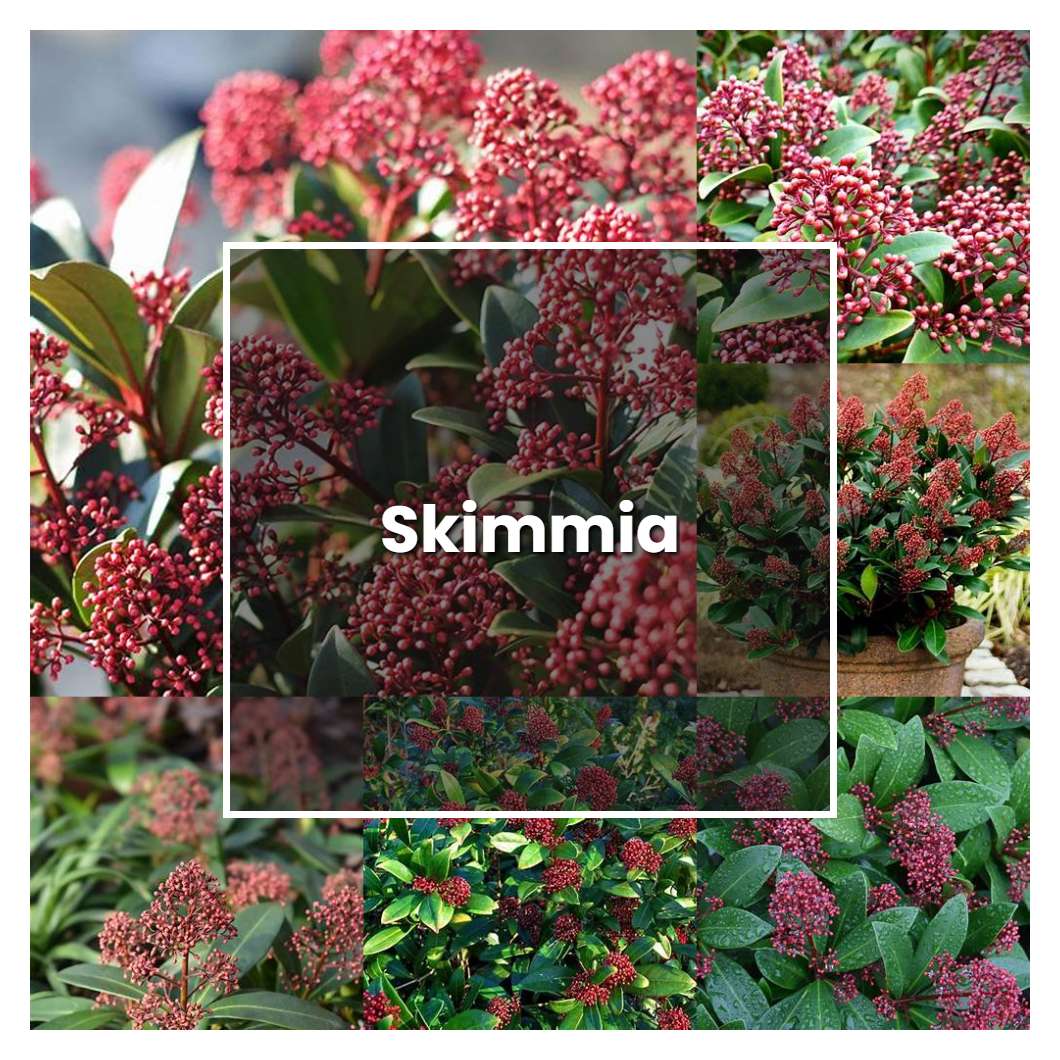Skimmia is a genus of 8 species of flowering plants in the rue family, Rutaceae. They are native to eastern Asia, from the Himalayas east to Japan. The leaves are evergreen, and the flowers are borne in panicles in spring. The fruit is a drupe.

Related plant:
Skimmia Reevesiana
Related plant:
Skimmia Japonica
About soil , Skimmia prefers well-drained, fertile soil that is on the acidic side. If the soil is too alkaline, the plant will not thrive. Skimmia will also do well in shady areas where the soil is moist but not soggy.
Like the other evergreens, skimmia can suffer from sunburn during the hottest months if they're not given some relief from the afternoon sun. They'll usually need some afternoon shade in USDA hardiness zones 7 and 8. In fact, too much sun can cause the leaves to turn yellow. If your skimmia is getting too much sun, move it to a shadier spot.
The temperature condition that is ideal for skimmia is between 60 and 70 degrees Fahrenheit. This range of temperature allows the plant to thrive and produce the most blooms. Skimmia prefers a cooler climate and does not do well in warmer weather. If the temperature gets too hot, the leaves of the skimmia will begin to turn brown and drop off.
Ideal humidity condition for this plant is 50-60%. The plant can tolerate lower humidity but this will cause the leaves to turn brown and drop off. If the humidity is too high, the plant will become susceptible to fungal diseases.
About fertilizer, this plant prefers rich, organic soil with good drainage. A root bound plant will have fewer flowers. If you have trouble getting your skimmia to flower, try adding some organic matter to the soil or moving the plant to a sunnier location.
Pruning Skimmia is a necessary part of maintaining this attractive evergreen shrub. Without proper pruning, the shrub can become leggy and unruly. The best time to prune is in late winter or early spring, before new growth begins. When pruning, be sure to remove any dead, diseased, or damaged wood. Next, cut back any long, straggly branches to encourage new growth. Finally, shape the plant by pruning back side branches to create a more compact shape.
Propagation is by seed or semi-ripe cuttings in late summer. Seed should be sown on the surface of a moist well-drained seed compost in a propagator at a temperature of 18-21C. Cover the seed with a thin layer of vermiculite. If seed is sown in spring, it will usually germinate the following spring. Germination can be erratic and may take several months. When large enough to handle, transplant seedlings into 7.5cm pots.
Usually, the plant growth rate is between 6 and 12 inches (15 and 30 cm) per year. However, some varieties may only grow 3 to 6 inches (7.5 to 15 cm) in a year. The Evergreen skimmia (Skimmia japonica) is a popular choice for hedges and Foundation plantings. It has a growth rate of 6 to 12 inches (15 to 30 cm) per year.
Common problems for this kind of plant plants are aphids, mites, and scale insects. These pests can cause the leaves to yellow and the plant to become stunted. If you see any of these pests on your skimmia plant, you should treat it with an insecticide.
Source:
Species: Skimmia japonica - Cornell University
Xiamen University Malaysia Campus
CaliforniaColleges.edu
